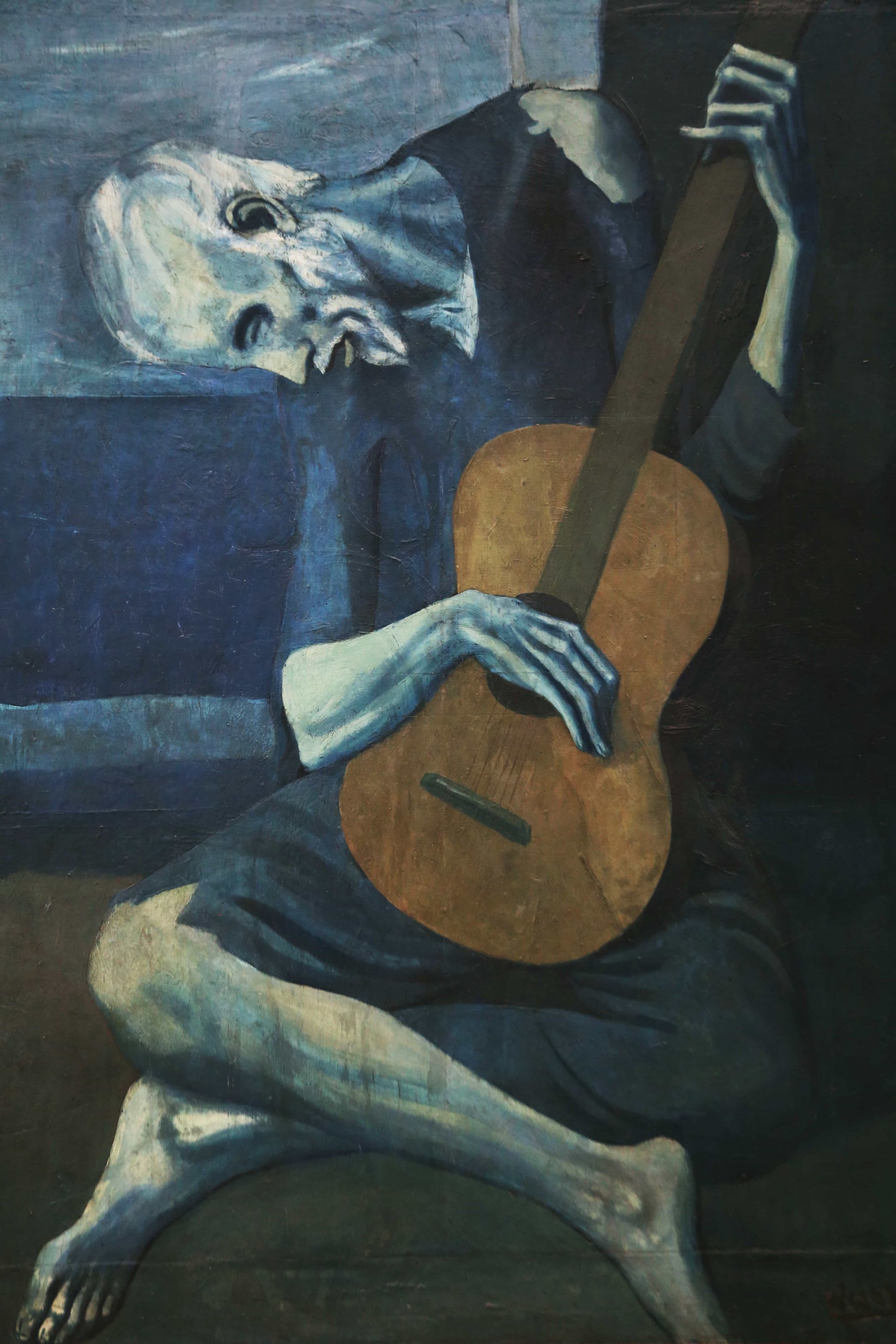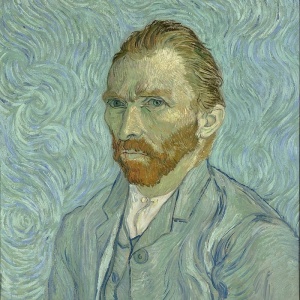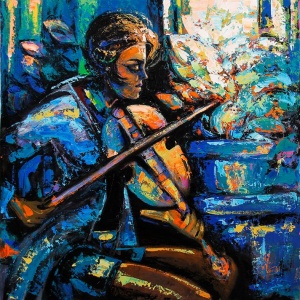Description
The Old Guitarist.
Painting type:
Oil painting
Size:
40cm x 50cm
Note:
Unframed painting!
Info:
The Old Guitarist is an oil painting by Pablo Picasso, made in late 1903 and early 1904. He depicts an elderly musician, a blind man, a crippled man dressed in miniskirts, who is a little weak on his guitar while playing on the streets of Barcelona, Spain. It is on display at the Art Institute of Chicago as part of the Helen Birch Bartlett Memorial Collection.
At the time of the creation of The Old Guitarist, Modernism, Impressionism, Post-Impressionism, and Symbolism greatly influenced Picasso’s style. In addition, El Greco, Picasso’s poor standard of living, and the suicide of a dear friend contributed to Picasso’s style at that time, which became known as his Blue Period. Several x-rays, infrared images and administrative tests revealed three different figures hidden behind an old guitar.
At that time, leaving his old and traditional education and seeking fame, Picasso and his friend Carlos Casagemas moved to Paris. A year later, Casagemas became increasingly disillusioned with love and failed to commit suicide. Picasso suffered greatly at the event and was soon crushed to the point of ruin. Moreover, Picasso was very poor. Her poverty makes her able to identify and communicate with beggars, prostitutes, and others who have been disfellowshipped.
These events and conditions were the first impetus for Picasso’s Blue Period which lasted from 1901 to 1904. The Blue Period is characterized by blue, gray and black movements, statistics of depression lost in thought, and deep and significant grief. After the Blue Age came the Picasso Ricasso Age, and eventually the Cubism movement Picasso founded.
The elements of The Old Guitarist are carefully selected to create a reaction from the viewer. For example, a monochromatic color scheme creates three-dimensional apartments that separate the guitar from time to time. In addition, the complete muted blue palette creates a typical melting tone and emphasizes the subtle and subtle theme. Excessive use of oil on the panel causes dark and theoretical feelings. Oil often blends the colors together without diminishing the light, creating a surprisingly cohesive texture.
Moreover, the guitar, though muscular, shows little sign of life and appears to be on the verge of death, which means less comfort in the world and emphasizes the misery of its condition. The details are removed and the scale is used to create long and beautiful scales while strengthening the guitarist’s quiet thinking and spiritual sense. The large, brown guitar is the only significant color change found in this painting; its dark brown color, prominent in contrast to the blue background, becomes the center and focus of it. The guitar represents the world of the guitarist and is the only hope for survival. This blind and poor lesson depends on his guitar and the little money he can earn from his music to survive. Some art historians believe that the painting depicts the artist’s personal life and the natural struggles that come with the work. Music, or art, therefore, becomes a burden and a divisive force that separates artists from the world. And yet, despite the isolation, the guitarist (musician) relies on the whole community to survive. All of these feelings reflect Picasso’s attitude at the time and his criticism of the state of society. The Old Guitarist becomes a symbol of human life.
Paul Mariani, the biographer of Wallace Stevens, presented his analysis of the painting as a point of contention and controversy raised by Stevens regarding the origins of his 1937 poem entitled The Man With the Blue Guitar,
“Despite repeated denials, it seems that Stevens has a picture here: The 1903 Picasso The Old Guitarist, depicting an old man with white hair and a beard sitting cross-legged and having long legs when playing his guitar. If Picasso tried to portray the world of poverty and misery, It was his suffering as a struggling young artist in Barcelona, where he painted many portraits, including these, of the poor. he can no longer see the world around him, he can see the depths of reality inside. ”
In Old Guitarist, Picasso may have painted George Frederic Watts’ 1886 portrait of Hope, resembling a sharp, helpless musician with distorted angular forms and a blue tone.





